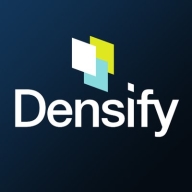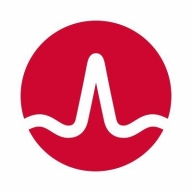

VMware Aria Operations and Densify are leading competitors in the cloud management and optimization sector. VMware Aria Operations holds an edge in deployment flexibility and customer service, whereas Densify shines with its optimization capabilities.
Features: VMware Aria Operations is tailored for comprehensive cloud management with features such as performance monitoring, troubleshooting, and capacity optimization meeting enterprise requirements. It facilitates performance analytics, proactive alerting, and resource allocation recommendations. It also integrates smoothly with other VMware products. Meanwhile, Densify excels in precise optimization for compute resources, delivering fine-tuned scaling insights and effective cost reduction strategies. Its advanced optimization algorithms and detailed analytics empower organizations to achieve operational efficiency.
Room for Improvement: VMware Aria Operations could benefit from enhanced integrations with non-VMware ecosystems and improved real-time analytics for more actionable insights. Users have expressed a need for greater customization in alert settings and a more consolidated interface to streamline workflow. Densify, while exceptional in optimization, may need to broaden its scope to cover more general cloud management tasks. Improved customer onboarding processes and more comprehensive documentation could enhance user experience. There is room to simplify its configuration process for ease of use in diverse environments.
Ease of Deployment and Customer Service: VMware Aria Operations provides an efficient deployment experience backed by robust customer support, making it ideal for enterprises seeking fast integration with existing systems. Its service reliability and extensive support resources ensure responsive assistance. Densify offers competent deployments but is best suited for more specialized use cases that might require advanced configurations. While it delivers solid customer service, feedback suggests the need for more widespread support resources to facilitate smoother deployment experiences.
Pricing and ROI: VMware Aria Operations offers flexible pricing models that reflect its extensive capabilities, thus delivering significant ROI for businesses in need of versatile cloud management solutions. Its price performance ratio is often justified by the broad range of functionalities it includes. On the other hand, Densify may entail higher initial costs due to its specialized features focused on optimization, but it offers strong ROI by consistently achieving cost reduction through accurate resource management and optimization. Its targeted benefits can be particularly rewarding for organizations focused on maximizing efficiency and lowering operational costs.
| Product | Market Share (%) |
|---|---|
| VMware Aria Operations | 30.7% |
| Densify | 2.1% |
| Other | 67.2% |


| Company Size | Count |
|---|---|
| Small Business | 1 |
| Midsize Enterprise | 1 |
| Large Enterprise | 9 |
| Company Size | Count |
|---|---|
| Small Business | 63 |
| Midsize Enterprise | 62 |
| Large Enterprise | 278 |
Densify is a hybrid cloud and container resource management platform that makes workloads self-aware of their precise resource requirements and automates the resource management and selection process. This solution helps you control your cloud spend and also helps your apps perform and scale better. Densify enables you to match your cloud requirements with the optimal cloud supply. Additionally, Densify is the only technology that leverages patented, predictive machine learning-powered analytics to perform advanced modeling of workload patterns, and provide precise optimization directives. It is ideal for cloud engineers, container platform owners, and IT finance.
Densify works by:
Densify Features
Densify has many valuable key features. Some of the most useful ones include:
Densify Benefits
There are many benefits to implementing Densify. Some of the biggest advantages the solution offers include:
VMware Aria Operations is a high-ranking virtualization management and cloud management tool that automates and simplifies IT management to the applications it supports. It achieves this through full-stack visibility from physical, virtual, and cloud infrastructure. The product allows users to enable self-driving IT operations management across private, hybrid, and multi-cloud environments. This is conducted with the unified operations platform that delivers continuous performance, capacity and cost optimization, and integrated compliance through artificial intelligence (AI) and machine learning (ML), and predictive analytics.
VMware Aria Operations Use Cases
VMware Aria Operations has several use cases, some of which include:
VMware Aria Operations Features
The product has various features which users can utilize. Several of the features that the 2022 version of VMware Aria Operations introduced include:
VMware Aria Operations Benefits
VMware Aria Operations brings various benefits to the organizations using it. Among them are the following:
Reviews from Real Users
Mohamed N., a tech lead VMware support engineer at a tech services company, appreciates VMware Aria Operations because it is easy to use, stable, and support is always available.
Mojtaba K., a senior system administrator at a comms service provider, values VMware Aria Operations due to the fact that its dashboards give you a glimpse of what is really going on in your virtualized environment.
We monitor all Virtualization Management Tools reviews to prevent fraudulent reviews and keep review quality high. We do not post reviews by company employees or direct competitors. We validate each review for authenticity via cross-reference with LinkedIn, and personal follow-up with the reviewer when necessary.